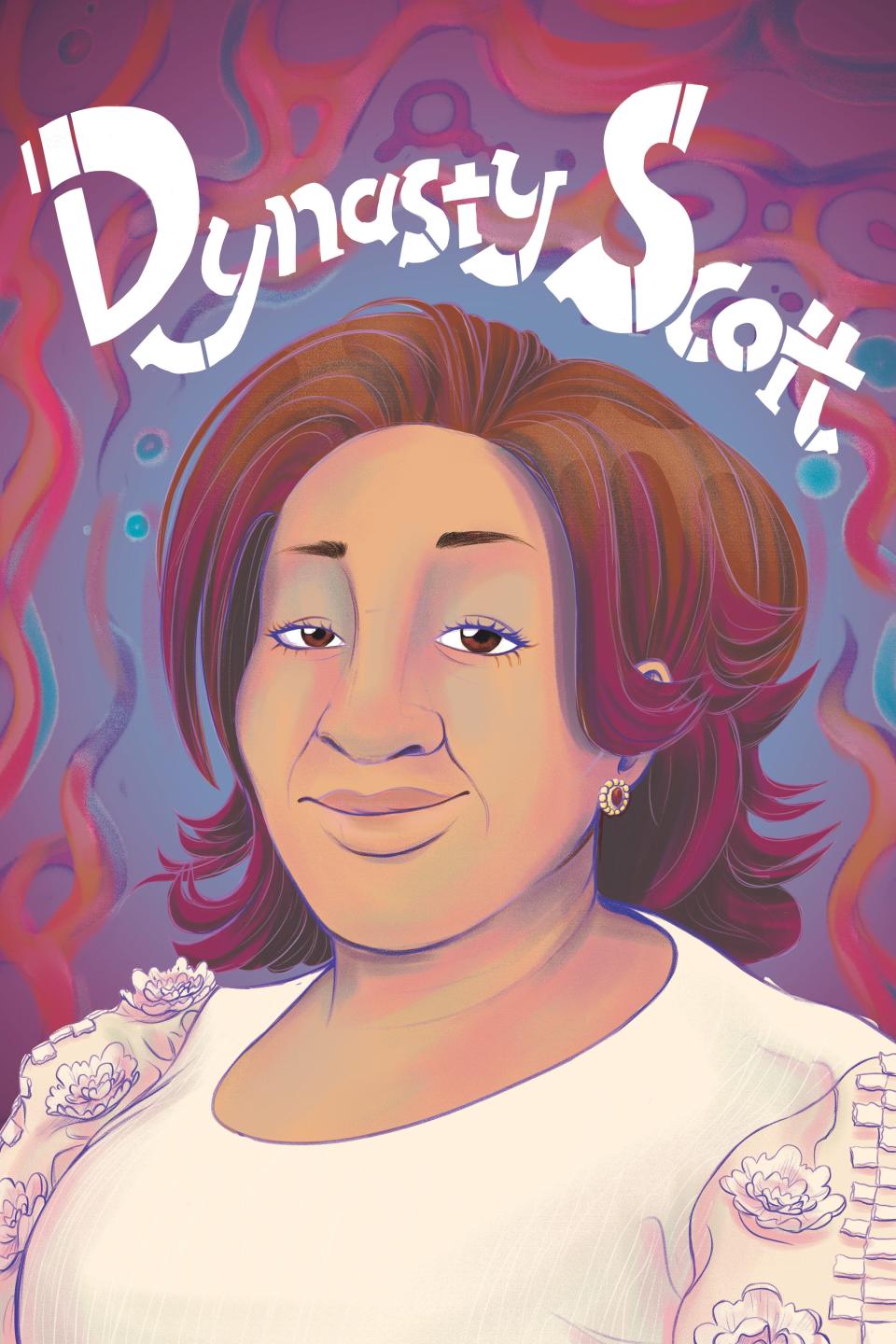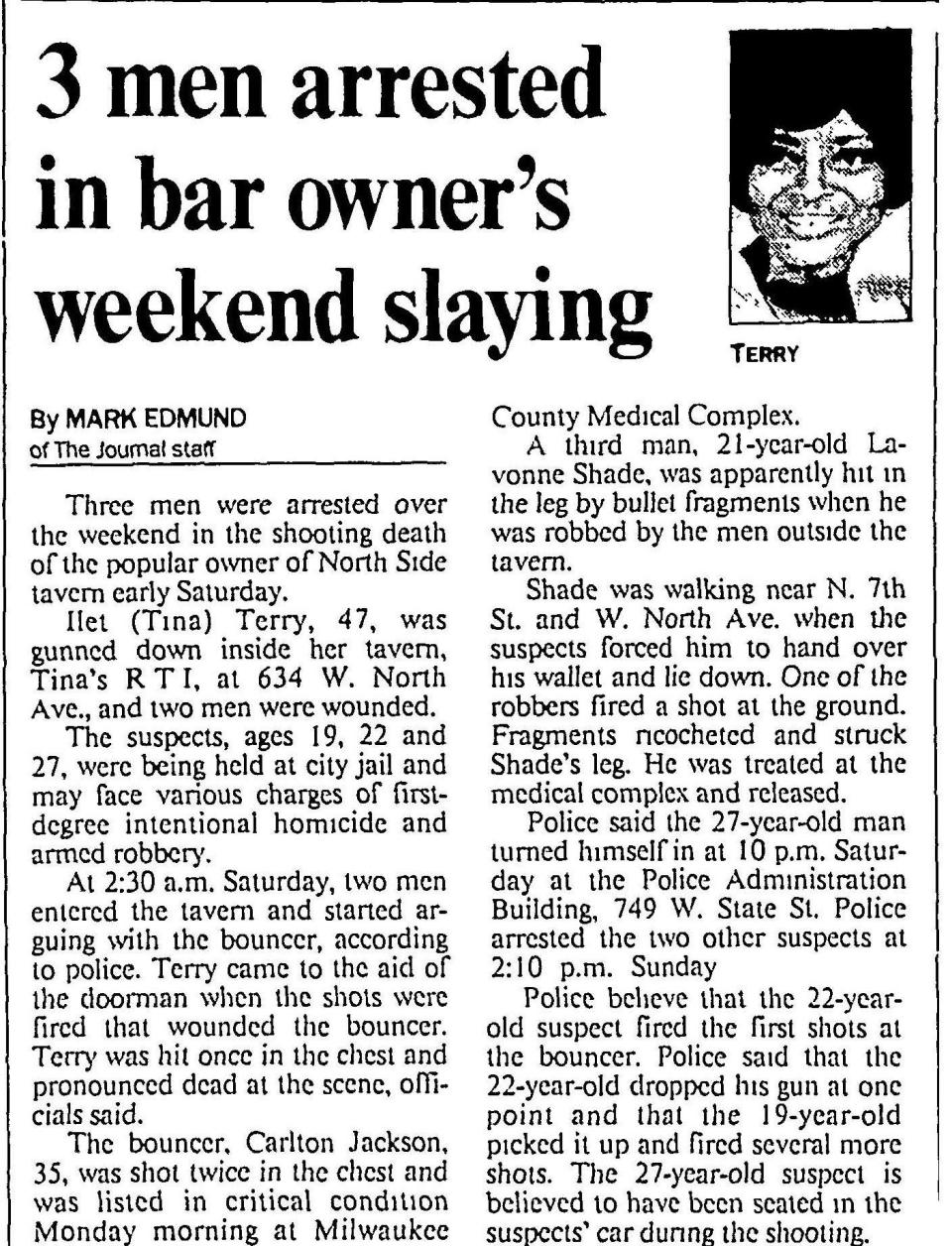Dynasty Scott recalls safe spaces where LGBTQ+ Milwaukeeans could be 'at home'
Editor's Note: In honor of Pride month, we will feature profiles of five Milwaukee Black LGBTQ+ elders. They were part of a research project for the mobile app lgbt milWALKee that was made possible by the fiscal sponsorship of the Cream City Foundation and grants from SC Johnson and the Greater Milwaukee Foundation. Their oral history interviews have since become the cornerstone of the House of History, a program of Diverse & Resilient dedicated to collecting and sharing Milwaukee’s Black LGBTQ+ history. The website houseofhistory.org will launch later this month.
As a professor of American history, I am thankful for any campaign that draws attention to our collective past, particularly when it uncovers the stories of those previously left out of our nation’s narrative. When such efforts truly work, they allow for a better understanding of both individual and communal histories, and how the two often inform each other.
I was reminded of this powerful dynamic while co-interviewing Dynasty Scott for the House of History, a community-led project uncovering the previously overlooked histories of Black LGBTQ+ Milwaukee. Assigned male at birth, Scott initially identified as an African American gay man before coming to identify as a trans woman later in life. Scott's development into her true self tells us much about her individual journey, but also illuminates so much about the broader world, in Milwaukee and beyond.
More: Watch the full video interview with Dynasty Scott
Coming of age as a queer person in the late 1970s was no easy task. One looked for spaces of community and safety as they sought to fully express their identity. For Scott, such spaces included a series of bars where she could let down her guard and be herself. One of the first she frequented was The Red Baron, 625 E. St. Paul Ave., often known simply as the Baron, which was open from 1977 to 1981.
Sometimes you had to follow the music to a safe spot

Yet finding such safe spaces wasn’t easy.
“We didn’t have Google,” she said. “You couldn’t even flip through the Yellow Pages to find anything like that, so you had to go by word of mouth to find out.”
Even then, she said sometimes you had to “follow the music” until you found the spot because clubs were purposelessly non-descript on the outside for safety reasons so someone passing by would have no idea what was going on behind the front door (often colorful, joyful celebrations).
“It was a different feeling when you went inside as you knew right away, 'OK I’m at home,'" she said. "You felt free to dance, you just let go, you weren’t pressured, it was just awesome. It was a great feeling, and everybody seemed like they were…they loved to be themselves.”
More: Milwaukee's Black LGBTQ+ elders share memories in new 'House of History' project
Throughout the early 1980s and into the 1990s she continued to find refuge in places like Artony’s, 219 E. Keefe Ave., a place she notes simply “was home."
"It was a safe haven for us because the owners, they knew that we weren’t welcome in the straight bars, so they kind of provided a bar for us," she said.
The hospitality extended to small details that stick with Scott after all these years: the staff would allow patrons to use the bathrooms as changing rooms. This allowed individuals not yet ready to reveal their identities to their families a place where they could prepare to present themselves as they wanted to be seen.
In 1982, Ilet (Tina) Terry purchased Artony’s and changed the bar’s name to “Tina’s.” In a quest to find a safer space for her customers, Tina moved her bar to a series of locations throughout the decade.

It was here on July 10, 1993, that Tina lost her life, shot while coming to the aid of one of her co-workers who was trying to remove a group of unruly men, who had been harassing female patrons of Tina’s, from the bar. The loss was “a horrible tragedy."
"Tina was like a mother of the bars," she said. "Tina had a heart of gold.”
Loss, listening and inspiration along the way
The loss was not the only tragedy that shaped Scott. Having gone to school to be nurse, she understood the damage wrought by AIDS during the 1980s better than most. During this moment, bars became sites where knowledge of the horrific disease could be spread, and efforts meant to address this tragic situation could be planned out.
Perhaps more importantly, they also became places where people could actually talk about AIDS, especially for those who tested positive for a disease with few treatment options at the time.
“There was a lot of shame," she said "Because they were so ashamed, they wouldn’t say anything.”
She adopted a "door open policy” for those impacted by AIDS, giving folks a person they could confide in: “I’ve learned how to just shut up and listen. Listening goes a long way.”
Scott also lived through another painful chapter in Milwaukee LGBTQ+ history: the era of Jeffrey Dahmer. Rather than fixating on the grisly details of Dahmer’s crimes, she instead remembers the humanity of his victims.
She grew up mere blocks away from Anthony “Deaf Tony” Hughes, who was murdered by Dahmer in 1991. They would often take the bus together when going out to the city’s gay bars. Once, she asked Hughes how he could dance so well at such bars, as he couldn’t hear the music. “He explained to me he goes by the vibration off the dance floor. I though that was so amazing, because he could dance!”

Yet this era was marked by more than loss. When she was 16, she dressed up as a woman for a Halloween costume contest – and won.
“So after that I was sneaking,” she said. "Putting on makeup, trying on wigs. I was doing all kinds of little things like that, so that’s how I started (the journey to becoming a trans woman).”
Throughout the 1980s, she would watch drag pageants in the city and quickly realized that there very few African American participants. Yet Scott found inspiration in such Black performers as Mahogany, Tina Capri, and Erica Stevens. She would soon start performing in such pageants and would go on to win the title of Miss Gay Wisconsin in 1994.
By that time, she had also started hormone treatments. As the 20th century drew to a close, she faced the dilemma of how to present herself at work, a problem still faced by many Black trans women to this day. Since retiring, however, she has found a sense of freedom that was not afforded to her during her tenure as a nurse. “I’m able to say thank God I made it to where I am,” she says with a sense of well-earned relief.
In listening to her story, I was struck by how the experiences she was describing were not only components of LGBTQ+ history, though they certainly did speak to such a history. Her life also tells us a great deal about the history of Milwaukee and America. And there are still so many stories like Scott's left to be heard. I pledge to keep listening.
Michael H. Carriere is director of the Milwaukee School of Engineering University Scholars Honors Program and an associate professor in the department of Humanities, Social Science, and Communication. The illustration of Dynasty Scott was created by Intan Zulkifli, a student at the Milwaukee Institute of Art & Design
This article originally appeared on Milwaukee Journal Sentinel: Pride Month profile features Dynasty Scott, nurse, trans woman and elder

